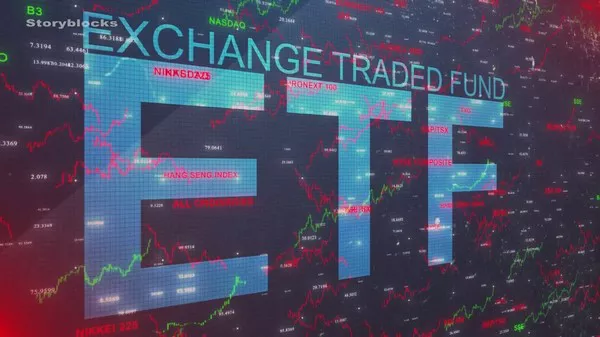In today’s dynamic investment landscape, exchange-traded funds (ETFs) have emerged as popular investment vehicles due to their diversification, liquidity, and flexibility. Among the various types of ETFs, futures ETFs offer a unique opportunity for investors to gain exposure to commodities, currencies, or indexes. In this article, we will explore the inner workings of futures ETFs, examining their structure, benefits, and potential risks.
I. Understanding Futures Contracts:
The Foundation of Futures ETFs
Futures contracts serve as the underlying assets for futures ETFs. These contracts represent agreements to buy or sell a specific asset (commodity, currency, or index) at a predetermined price and date in the future. They enable investors to speculate on price movements, manage risk, or gain exposure to a particular market without owning the physical asset. Futures contracts are standardized, regulated, and traded on exchanges.
II. The Structure of Futures ETFs:
Blending ETFs with Futures Contracts
Futures ETFs combine the benefits of traditional ETFs with the use of futures contracts. They track the performance of a specific futures index by holding a portfolio of futures contracts. The ETF manager employs a strategy to roll over expiring contracts into new contracts to maintain exposure. The goal is to replicate the returns of the underlying index or asset by carefully managing the futures positions.
III. Benefits of Futures ETFs:
Harnessing Opportunities and Managing Risk
1.Diversification: Futures ETFs provide exposure to a wide range of asset classes, allowing investors to diversify their portfolios across different markets, sectors, or geographies. This diversification helps reduce the impact of individual asset price fluctuations on the overall portfolio.
2.Liquidity: Trading on exchanges, futures ETFs offer high liquidity, enabling investors to buy or sell shares throughout the trading day at market prices. This liquidity provides flexibility and ease of trading, even in volatile markets.
3.Efficiency: Futures ETFs offer cost-effective exposure to asset classes that are otherwise challenging to access directly. By pooling investor assets, these ETFs achieve economies of scale and reduce transaction costs.
4.Leverage: Some futures ETFs utilize leverage, amplifying the exposure to the underlying assets. This feature allows investors to potentially magnify returns; however, it also carries higher risks and requires careful consideration.
IV. Risks and Considerations:
Navigating the Potential Pitfalls
1.Market Volatility: Futures ETFs can be subject to substantial price fluctuations due to the underlying futures contracts’ inherent volatility. Investors should be prepared for the potential for increased volatility and market risk.
2.Rolling Over Contracts: The process of rolling over expiring futures contracts into new contracts introduces a degree of complexity. If not executed correctly, it can lead to tracking errors and divergence from the intended index performance.
3.Leverage Risks: Leverage, while offering the potential for higher returns, can also amplify losses. Investors need to carefully assess their risk tolerance and understand the impact of leverage on their investments.
4.Contango and Backwardation: Futures contracts can trade in contango (when future prices exceed spot prices) or backwardation (when future prices are lower than spot prices). These market conditions can affect the performance of futures ETFs and should be considered by investors.
V. Selecting Futures ETFs:
Finding the Right Fit
1.Underlying Asset Class: Investors should consider their investment objectives and choose futures ETFs that align with their desired asset class exposure, whether it’s commodities, currencies, or indexes.
2.Tracking Methodology: ETFs can track the price performance of futures contracts through eithera total return methodology or a collateralized methodology. Understanding the tracking methodology is crucial as it can impact the ETF’s performance and tracking accuracy.
3.Expense Ratios: Evaluating the expense ratios of futures ETFs is essential to gauge the cost-effectiveness of the investment. Lower expense ratios can contribute to higher net returns over the long term.
4.Trading Volume and Liquidity: Assessing the trading volume and liquidity of the futures ETF is vital to ensure ease of buying and selling shares without significant price impact. Higher trading volume generally indicates better liquidity.
5.Historical Performance and Risk Metrics: Reviewing the historical performance and risk metrics of the futures ETF can provide insights into its track record and risk profile. It’s important to consider factors such as volatility, risk-adjusted returns, and drawdowns.
VI. Regulatory and Tax Considerations:
Navigating the Legal Landscape
1.Regulatory Oversight: Futures ETFs are subject to regulatory oversight to ensure transparency, investor protection, and fair trading practices. Investors should be aware of the regulatory framework in their jurisdiction and understand the ETF’s compliance with applicable regulations.
2.Tax Implications: Like other investments, futures ETFs may have tax implications. Investors should consult with tax professionals to understand the tax treatment of dividends, capital gains, and potential tax reporting requirements.
VII. Monitoring and Reviewing:
Staying Informed and Adaptive
1.Ongoing Monitoring: Regularly monitoring the performance and tracking accuracy of futures ETFs is crucial. This involves reviewing the ETF’s holdings, expenses, tracking error, and any changes in the underlying futures contracts.
2.Staying Informed: Keeping abreast of market trends, economic indicators, and geopolitical developments is essential for understanding the potential impact on the underlying assets of futures ETFs. Timely information can assist in making informed investment decisions.
Conclusion:
Futures ETFs offer investors a gateway to gain exposure to diverse asset classes, manage risk, and navigate complex markets. By combining the benefits of ETFs and futures contracts, these investment vehicles provide liquidity, diversification, and efficiency. However, it’s crucial for investors to carefully consider the risks, understand the mechanics of futures contracts, and select ETFs that align with their investment objectives. With proper due diligence, futures ETFs can be a valuable tool in expanding investment horizons and capturing opportunities in the ever-evolving financial landscape.
Disclaimer: The information provided in this article is for educational purposes only and should not be considered as financial or investment advice. Investors should conduct thorough research and consult with a financial advisor before making any investment decisions.


